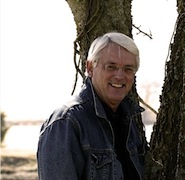 I now know there are sixteen official languages and another few dozen dialects that people really use. There are hues of skin color from very dark to very light. There are regional modes of dress with great distinction and variation. There are as many cusines as there are villages (I’ve been told about 56,000), and few can name but the top four or five of the dozens of religions that ebb and wane. Although officially outlawed, there are dozens of casts and hundreds of sub-casts that add texture to an already complex society.
I now know there are sixteen official languages and another few dozen dialects that people really use. There are hues of skin color from very dark to very light. There are regional modes of dress with great distinction and variation. There are as many cusines as there are villages (I’ve been told about 56,000), and few can name but the top four or five of the dozens of religions that ebb and wane. Although officially outlawed, there are dozens of casts and hundreds of sub-casts that add texture to an already complex society.
The economic structure supports at least six major groupings…..At the top there is The Very Rich, which every society must tolerate, and in India this includes the successors of the former princely Maharajas. Next comes The Rich which includes the usual suspects of real estate, finance, and more recently IT. It’s been reported that although small, this is the fastest growing group in India. The entrepreneur that I met in Delhi is an example of this group. The Middle Class and Lower Middle Class cross a wide strata of Indian society and includes merchants, civil servants, teachers, business clerks, and a huge grouping of self employed small business owners. The Poor and The Very Poor overwhelm, by sheer numbers, all of the other groups and are what India is most identified with.
Hindus account for about 80% of the population, but where religion stops and social practice starts is a very fuzzy line indeed. Muslims are the largest minority religion with about 12-14% of the population. The other 6-8% are a hodge podge of Christians, Jains, Animists, Sikhs (I still don’t know why they’re not included with Hindus), Parsis, Jews, Buddhists, and a host of others that I can’t remember.
There is some, but not a lot of geographic separation. There are more Muslims in the north, more Catholics in Goa on the west coast, and the few Jewish communities reside almost exclusively in major metropolitan areas, and Sikhs, while spread throughout India, seems to aggregate in Punjab, while the Buddhists are mostly in the northeast territories. A short walk down any major street in any city can bring you in contact with them all, or almost all.
For the most part, with some dreadful, sporadic exceptions, they seem to get along. The exceptions first. At the time of Independence from Britain in 1947, the partition of Pakistan from India also took place. For reasons that are not entirely clear to anyone…..a blood bath of epic proportions ensued. Muslims killed Hindus fleeing for the south and Hindus slaughtered Muslims heading north. The ones who tried to stay put, regretted it with their blood. It’s thought that about two million died. Many of those who died had been friends, neighbors and colleagues of those who killed them. Of course, most were killed by gangs of ruffians running amok, but there were many who stood by and watched it happen. Then, later, in the aftermath of the assassination of Indira Ghandi, about 200,000 Sikhs were killed by anyone who could catch them in a fit of mahem triggered by the killing of Indira by her personal guard, a Sikh. These terrible exceptions can only be rationalized to me by the phenomonem of mass hysteria induced by emotional trauma, but what do I know.
Yet, the communities defined, by caste, economics, and religion have coexisted, more or less, in harmony for hundreds of years. I wonder if this can be explained in part by the inclusiveness of Hinduism. Not only do they have plenty of gods for themselves, they seem to be more than willing to accept anyone else’s god as well. The say about Jesus, “he seems to be a pretty good fellow, probably trained in India”. The other notion that occurs to me is that Hindu is so complex, that no one really understands it, and, therefore, they don”t take it so seriously that they would be willing to ostracize or kill someone for not agreeing with some fine point of dogma.
I don’t really know the meaing of any of this except to say that if you’re going to live in a country of 1.2 billion with a high population density, then you have two choices: 1) you kill each other off until only one point of view survives or 2) you figure out that tolerating other points of view is essential to survival, and that’s what you do.


